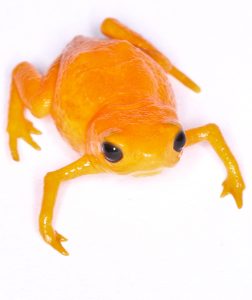
A disease-inducing fungus in amphibians worldwide could become deadlier as different genetic variations emerge, according to research led by The University of Alabama.
Biologists tested the harmfulness of a Brazilian hybrid form of Batrachochytrium dendrobatidis, known simply as Bd or the amphibian chytrid fungus, as well as both parent forms, on species of frogs from the Brazilian Atlantic Forest. They found infections and strength of the illness increased with the hybrid form.
Published today in Scientific Reports, the research is the first to demonstrate hybrids of the fungus can be deadlier than more common and widespread fungal genotypes.
“With globalization facilitating pathogen spread across continents, hybridization of chytrids might lead to new epidemic waves reducing amphibian biodiversity in both tropical and temperate regions,” said Dr. Gui Becker, UA assistant professor of biological sciences.
Becker was a co-author on the paper, “Hybrids of amphibian chytrid show high virulence in native hosts,” which was led by Dr. Sasha Greenspan, a UA post-doctoral researcher.
When the paper was written a few months ago, the Brazilian hybrid of the fungus was the only one documented, but new evidence shows another hybrid of the fungus emerged in South Africa, Greenspan said.
“The genetics of this fungus are changing, and with these changes may come new risks for frog populations,” she said.
The fungus’ complex genetic history is not completely understood, but a relatively new version, on an evolutionary timescale, is known as the Global Pandemic Lineage, or Bd-GPL. What led to its emergence is unknown, but it is particularly deadly.
Learn more about the deadly fungus by reading the full article on the UA news site.